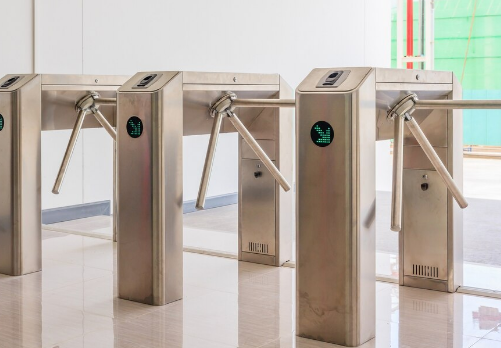
Turnstile Gates Maintenance: Ensuring Smooth Operations
In the world of access control and security, turnstile gates play a crucial role in regulating entry and exit points. Whether in airports, stadiums, office buildings, or educational institutions, these gates provide a secure and efficient means of controlling pedestrian traffic. However, like any mechanical system, turnstile gates require regular maintenance to ensure they function smoothly and effectively. In this article, we will delve into the importance of turnstile gates maintenance, the key components to focus on, and the benefits it brings to various industries.
Table of Contents
- Introduction
- The Significance of Turnstile Gates
- Components of Turnstile Gates 3.1. Rotating Arms and Barriers 3.2. Sensors and Control Systems 3.3. Mechanical Components
- The Importance of Regular Maintenance 4.1. Preventing Mechanical Failures 4.2. Ensuring Accurate Access Control 4.3. Prolonging Lifespan
- The Maintenance Process 5.1. Inspection and Cleaning 5.2. Lubrication 5.3. Software Updates
- Benefits of Turnstile Gates Maintenance 6.1. Enhanced Security 6.2. Cost Savings 6.3. Improved User Experience
- Industry-Specific Considerations 7.1. Airports 7.2. Stadiums and Arenas 7.3. Corporate Offices
- Conclusion
- FAQs 9.1. How often should turnstile gates be maintained? 9.2. What are the signs that a turnstile gate requires maintenance? 9.3. Can maintenance be performed in-house, or should it be outsourced? 9.4. Are there any safety considerations during maintenance? 9.5. What is the typical lifespan of a well-maintained turnstile gate?
Introduction
Turnstile gates have become an integral part of modern security and access control systems, serving as the first line of defense against unauthorized entry. However, to maintain their effectiveness, regular maintenance is essential.
The Significance of Turnstile Gates
Turnstile gates are more than just barriers; they are sophisticated access control devices that ensure only authorized individuals gain entry. Their significance lies in their ability to enhance security and streamline pedestrian flow.
Components of Turnstile Gates
3.1. Rotating Arms and Barriers
The physical barriers of turnstile gates that rotate to permit or restrict passage.
3.2. Sensors and Control Systems
The sensors and control mechanisms that detect individuals and manage gate operations.
3.3. Mechanical Components
The mechanical parts responsible for the gates’ movement and stability.
The Importance of Regular Maintenance
4.1. Preventing Mechanical Failures
Regular maintenance can identify and address mechanical issues before they lead to gate failures.
4.2. Ensuring Accurate Access Control
Maintaining sensors and control systems ensures accurate access control, preventing unauthorized entries.
4.3. Prolonging Lifespan
Well-maintained turnstile gates can have a significantly longer lifespan, providing a return on investment.
The Maintenance Process
5.1. Inspection and Cleaning
Regular inspection and cleaning remove debris and ensure smooth operation.
5.2. Lubrication
Proper lubrication reduces friction, preventing wear and tear.
5.3. Software Updates
Keeping gate control software up to date enhances security and functionality.
Benefits of Turnstile Gates Maintenance
6.1. Enhanced Security
Maintenance ensures gates remain secure, deterring unauthorized access.
6.2. Cost Savings
Preventive maintenance reduces the need for costly repairs or replacements.
6.3. Improved User Experience
Smoothly operating gates enhance the user experience, reducing wait times.
Industry-Specific Considerations
7.1. Airports
Turnstile gates in airports require meticulous maintenance due to high traffic volumes and security demands.
7.2. Stadiums and Arenas
Maintenance in these venues is crucial to facilitate smooth entry during events.
7.3. Corporate Offices
Well-maintained turnstile gates in offices contribute to a professional and secure environment.
Conclusion
Turnstile gates are indispensable tools for access control and security. Regular maintenance ensures they continue to fulfill their role effectively, enhancing security and improving user experiences.







